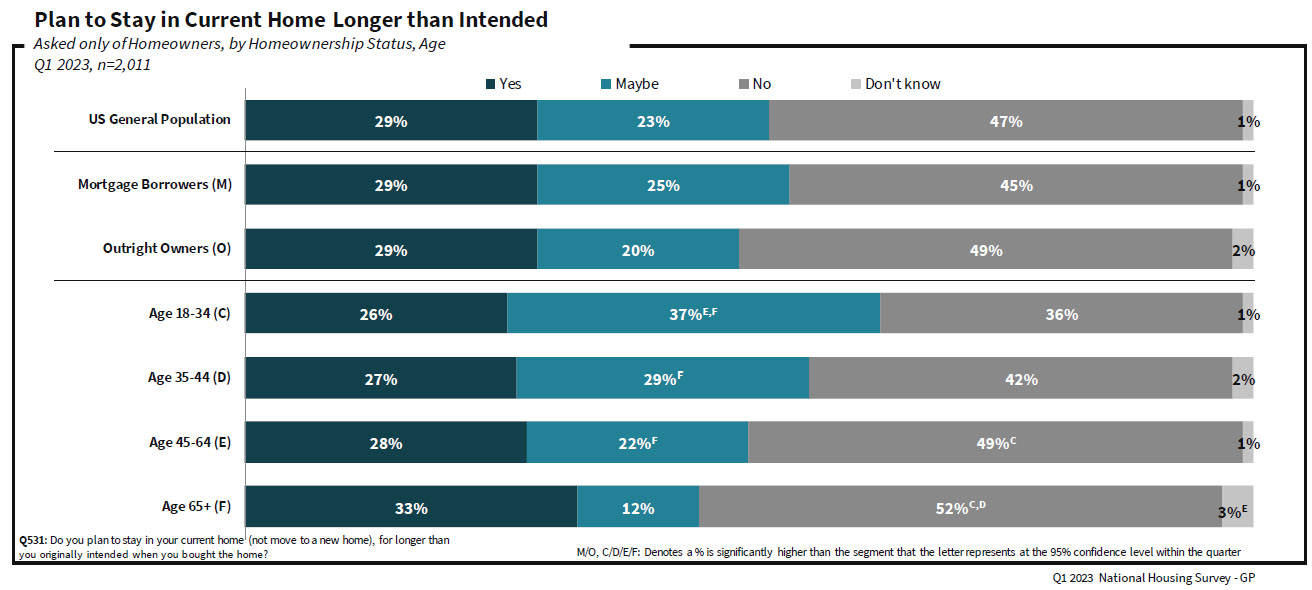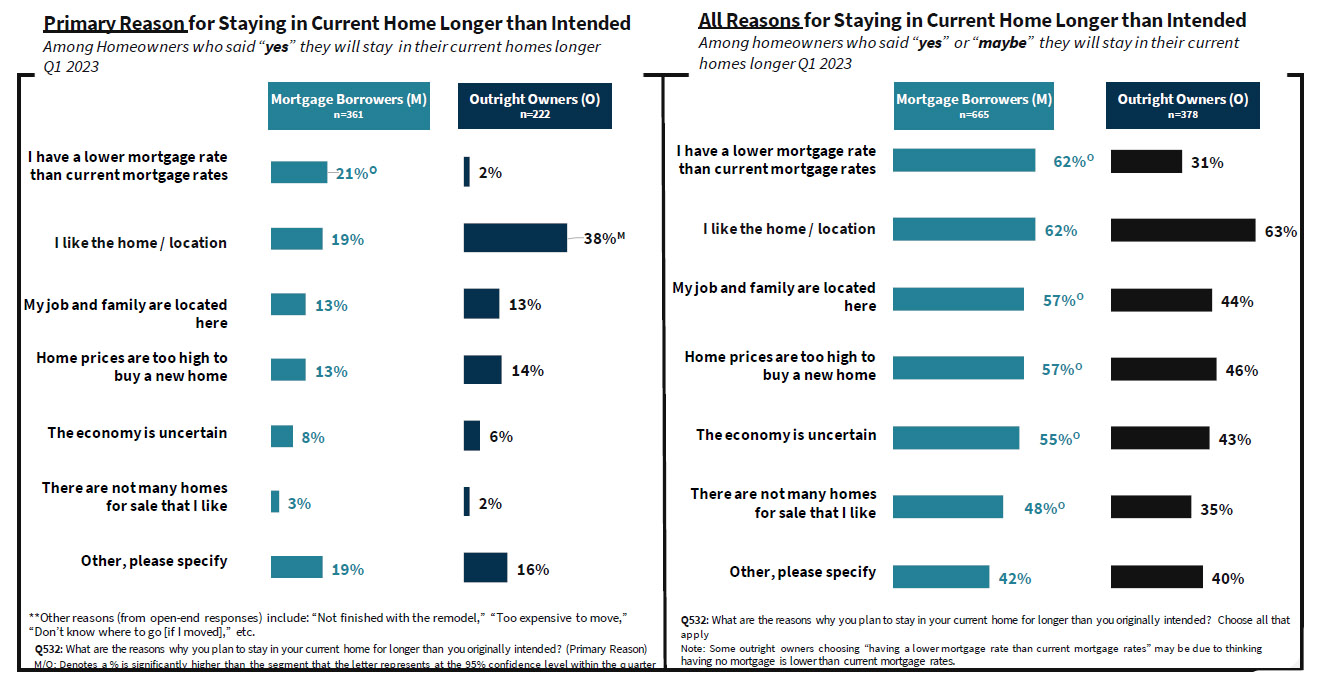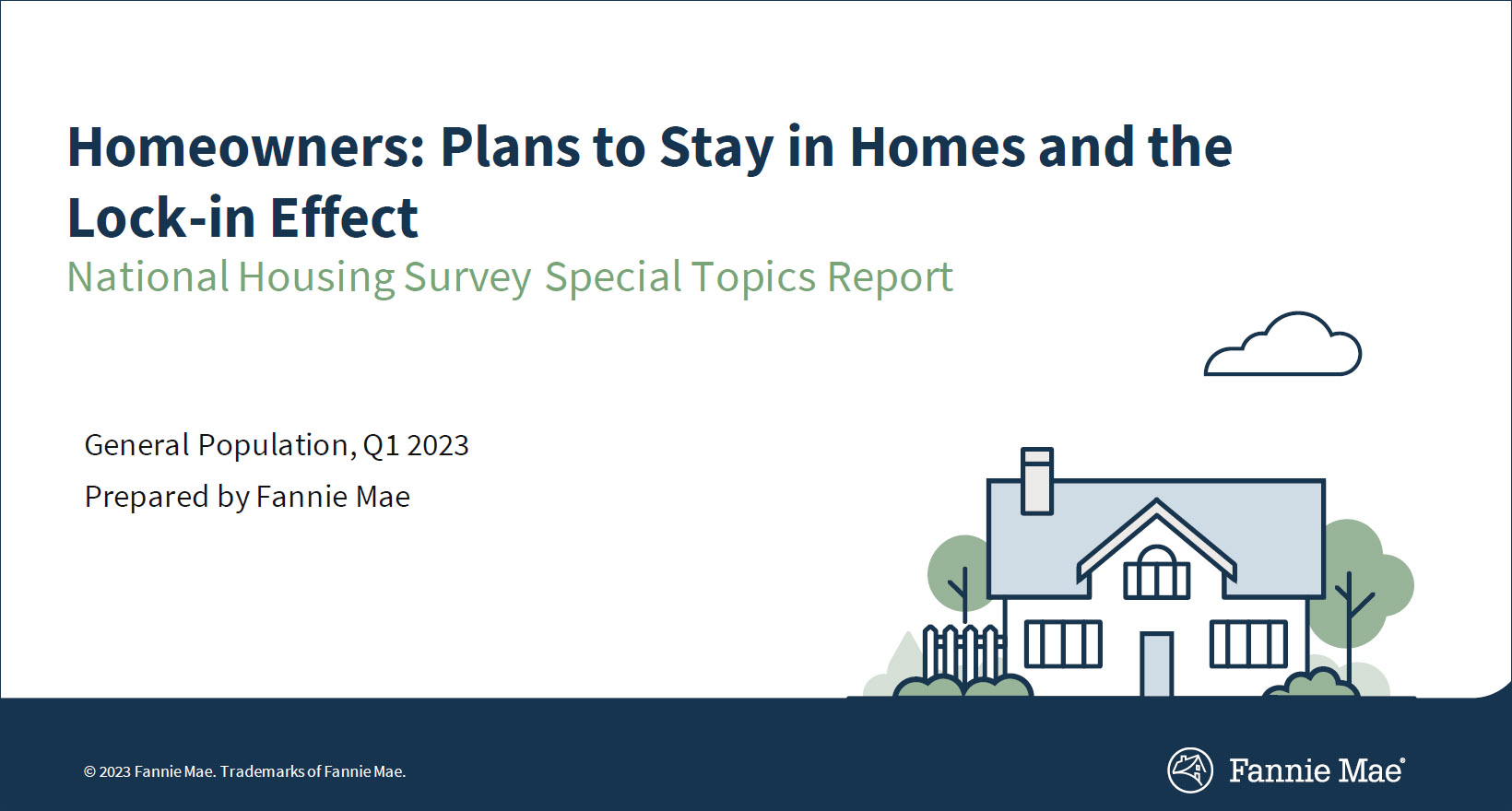'Lock-in Effect' Not the Only Reason for Housing Supply Woes
An unintended consequence of the policy response to the COVID-19 pandemic was a dramatic decline in mortgage rates that allowed millions of homeowners to refinance their mortgage at rates well below current levels. Additionally, as housing needs changed and mortgage rates moved lower, home sales jumped, growing approximately 14% from 2019 to 2021 compared to a much slower 1% increase from 2018 to 2019.
In 2022, mortgage rates doubled. Consumers adjusted to those rising rates, in part, by purchasing fewer homes, and so homes sales declined nearly 18% year over year. This year, while new home sales have rebounded, the paucity of existing home sales has persisted, declining from a peak annualized sales pace of 6.6 million units in January 2021 to 4.0 million annualized in August 2023. In fact, as of August, the number of existing homes for sale hovered around 1.1 million, 40 percent below the level seen in August 2019, pre-pandemic1. As of this writing, in 2023, the 30-year fixed-rate mortgage is at 7.79 percent, more than one full percentage point above where they were at the end of 2022.2
Many market observers, including us, have often attributed the decline in home listings to the so-called mortgage rate "lock-in effect" – or the disincentive for existing homeowners to sell their homes because their current mortgage rate is well below current market rates.
To better understand this effect, in the first quarter of 2023 we asked homeowners via our National Housing Survey® if they planned to stay longer in their current homes than originally intended and, if so, why. In summary, we found that:
- An equal share (29%) of people with a mortgage (mortgage borrowers) and outright owners (homeowners without a mortgage) said that they do plan to stay in their home longer than originally intended, while 45% of mortgage borrowers and 49% of outright owners said they do not plan to stay in their home longer than they originally intended.
- While mortgage borrowers indicated that being "locked-in" to a low mortgage rate was the leading reason for staying longer in their homes (21%), there were other reasons close behind, including that they like their current home (19%) and that home prices are too high to buy another home (13%).
These findings, as well as others from the survey, indicate that there is more to the decline in existing homes for sale than just the lock-in effect.
Mortgage rate lock-in is only one reason for staying put
Going into the study, our hypothesis was that a large majority of mortgage borrowers would say they planned to stay in their homes longer than originally intended due to having a significantly lower mortgage rate than current rates. However, the research findings did not show this.
Only 29% of mortgage borrowers told us that they plan to stay in their homes longer. Importantly, of that population, 21% said this was primarily due to having a low mortgage rate, a subset that would represent only 6% of all mortgage borrowers. The other top reasons for staying put were "I like the home/location" at 19% and "home prices are too high to buy" and "my job and family are located here" at 13% each.
Click image above for larger view
Looking at the responses more broadly – by adding together those who responded "yes" and "maybe" to the plan-to-stay-longer question – showed that a slight majority (or 54%) of mortgage borrowers may stay in their homes longer. Of those, when asked to pick all of the reasons why they would consider staying longer, 62% indicated that having a low mortgage rate was only one of several. This means that, in total, 33% of all mortgage borrowers who may stay in their homes longer considered their low mortgage rate to be a factor. Once again, the other top reasons given were "I like the home/location" at 62%, "home prices too high" at 57%, and "job and family located here" at 57%. Altogether, this is a strong indication that borrowers weigh multiple factors when considering how long to stay in their homes, both financial and non-financial.
Of course, nearly half of mortgage borrowers said that they haven't changed the amount of time they plan to stay in their homes, and, as shown above, somewhere between 6% and 33% of current mortgage borrowers plan to stay longer at least partly due to the lock-in effect. These findings suggest to us that a fairly strong majority of mortgage borrowers' future moving plans may not be affected by their mortgage rate.
Click image above for larger view
Implications
These survey results lead us to conclude that there are multiple factors contributing to the historically low supply of existing homes for sale. While the lock-in effect is real for many consumers, the full range of reasons provided by mortgage borrowers and outright owners for planning to stay in their homes longer paints a significantly more nuanced picture. Several reasons, including simply liking the home and placing value on living near family, friends, and their workplace, have also contributed to the lack of supply.
The pandemic period likely emphasized some of these non-financial factors, as well, since many consumers spent more time in their homes and invested heavily in home remodeling and assorted do-it-yourself projects.3 Additionally, the low-rate environment during the pandemic accelerated home purchases for many, pulling forward home listings and sales that likely would have been more evenly distributed in subsequent years. There are also demographic and generational shifts to consider: For instance, Baby Boomers represent 32% of homeowners,4 and over 80% have said they would like to age in place.5 This preference is likely also contributing to the supply shortage.
The long-term decline in consumer mobility is another underlying trend that we believe is constraining listings. Census data indicate that the percentage of movers annually has steadily decreased from 16.8% to 12.6% from 2006 to 2022. A Fannie Mae analysis in 2020 showed that existing homeowner mobility rates were 25% lower than during the pre-Great Recession period (circa 2000) and that mobility had declined across all age groups.
All in all, there are a confluence of factors and trends contributing to the lack of housing inventory in the United States, with the lock-in effect functioning as one of several. For more homeowners to be incentivized to put their homes on the market, other factors beyond mortgage rates may have to change, such as older generations aging out of their homes. As it stands now, and given these results, even if mortgage rates were to decline meaningfully in the intermediate term, we would not expect to see a surge in home listings.
The authors thank Steve Deggendorf, Doug Duncan, and Matthew Classick for valuable contributions in the creation of this commentary and the design of the research. Of course, all errors and omissions remain the responsibility of the authors.
Opinions, analyses, estimates, forecasts, and other views of Fannie Mae's Economic & Strategic Research (ESR) group included in these materials should not be construed as indicating Fannie Mae's business prospects or expected results, are based on a number of assumptions, and are subject to change without notice. How this information affects Fannie Mae will depend on many factors. Although the ESR Group bases its opinions, analyses, estimates, forecasts, and other views on information it considers reliable, it does not guarantee that the information provided in these materials is accurate, current or suitable for any particular purpose. Changes in the assumptions or the information underlying these views could produce materially different results. The analyses, opinions, estimates, forecasts, and other views published by the ESR group represent the views of that group as of the date indicated and do not necessarily represent the views of Fannie Mae or its management.
1 National Association of Realtors
2 https://fred.stlouisfed.org/series/MORTGAGE30US
4 American Community Survey (ACS), 2021





